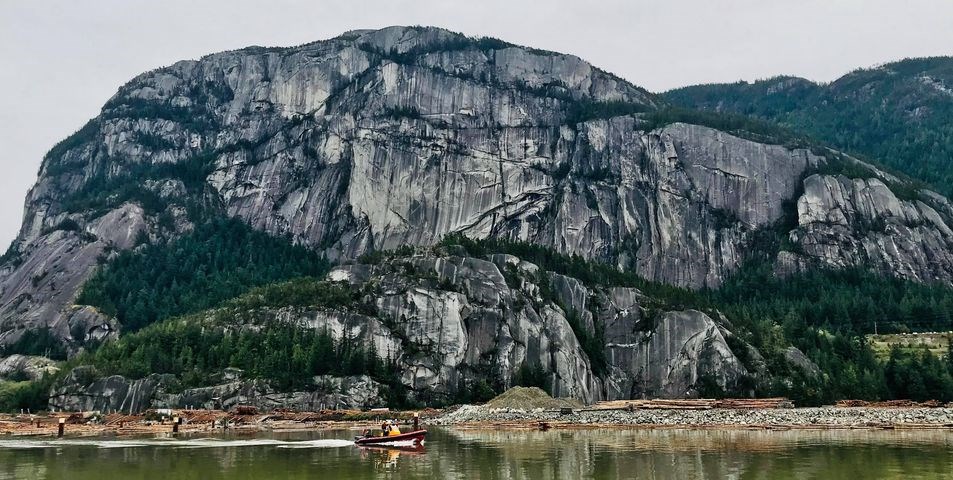A Beginner’s Guide to Climbing in Squamish
From access to climbing style, here's what to know if you've never visited this west coast town

Squamish is one of the best places in North America for rock climbing, but like all places there are a few things to know before visiting. Here’s a list of some things to know before you go.
Brief History: Rock climbing in Squamish started in the late 1950s and rose in popularity after the highway from Vancouver was built. The climbing community was relatively small until the 1970s, when the Squamish Hardcore (a local group of top climbers who opened dozens of test-piece routes) were organized by Gordie Smaill. While hundreds of new routes have been added, the classics are still some of the best.
Style: The granite is coarse with small crystals and is quick to be overgrown by foliage. While some cracks are easy to protect, others have awkward tapers that make them more difficult. Some of the sport crags are steep, but generally the climbing is on slab and good foot work is a must.
Access: The Squamish Access Coalition keeps up-to-date information on their website about access issues. Everything from where you can and can’t park to route closures due to nesting birds can be found at squamishaccess.ca.
Runouts: Some of the crack climbs will have run-outs, but most of the older bolted routes will be very runout. Study the guidebook before heading up your objective. If you’ve never climbed in Squamish, start on easier grades to get used to the protection placements.
Rack: Bring a double rack from micro-cams to four inches. Have a rack of sport draws, but also a rack of shoulder-length extendable quickdraws. Keep some slings around your chest with single biners, so you can clip them to cams that already have a biner. Bring slings and locking biners for anchors.
Anchors: While many anchors are bolted, you’ll have to know how to build gear anchors on most climbs. Always have a three-point equalized anchor. Seek proper instruction before attempting this on your own. If there are bolts, then use all of the bolts available for your anchor. Squamish gets busy, so be prepared to share belay ledges.
Walk-offs: Most of the routes on The Chief can be descended via a trail. There are only a few routes that you’ll need to rappel down. Nevertheless, always be prepared to rappel in case of an emergency or bad weather. For descent trails, refer to a local guidebook.
Lineups: Squamish is one of North America’s busiest climbing locations in the summer. If you don’t want to line up, then bring a headlamp and get an early start. There are enough climbs to go around, so do some research and try a more remote or not-so-classic route on busy weekends to avoid the crowds.
Best Intro Routes: There are a number of great first-crack-climbs in Squamish, but these are the safest and most-lapped: Laughing Crack 5.7 at Smoke Bluffs, Corn Flakes 5.6 at Smoke Bluffs, Klahanie Crack 5.7 at Shannon Falls and Banana Peel 5.7 on The Apron.
Best Hard Routes: Squamish is known for its hard and burly crack climbs. Some of the best hard routes are: University Wall 5.12 8p, The Calling 5.12 6p, Zombie Roof 5.13a at the Smoke Bluffs and Made From Fire 5.12 at Top Shelf.


